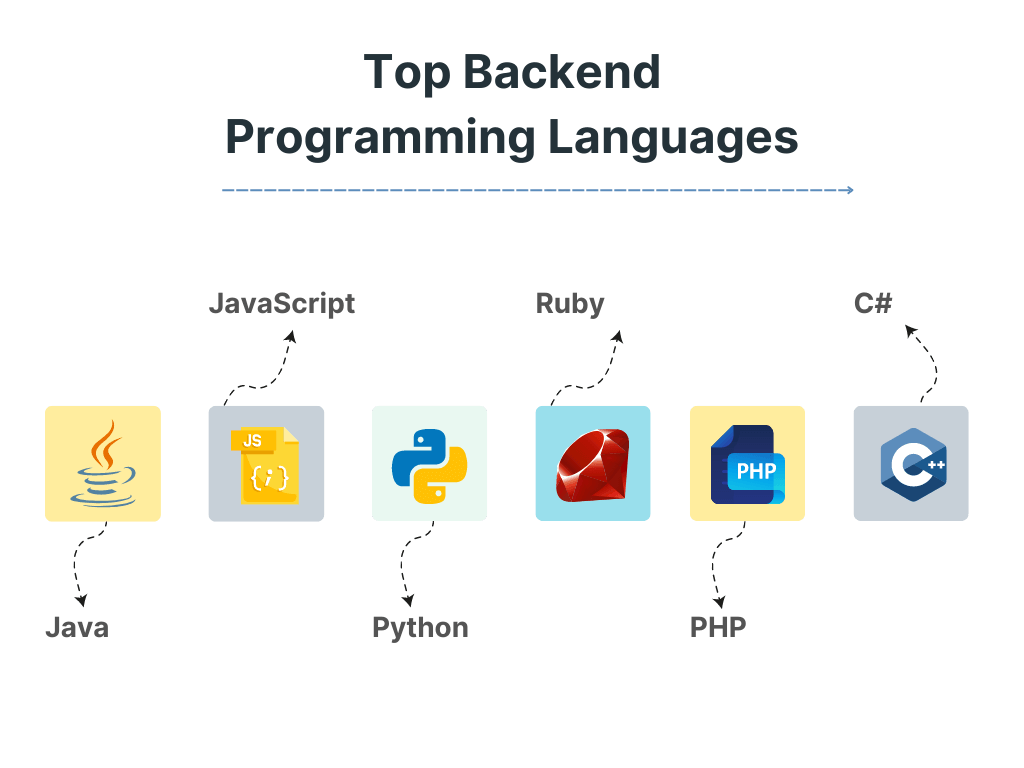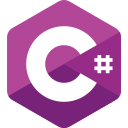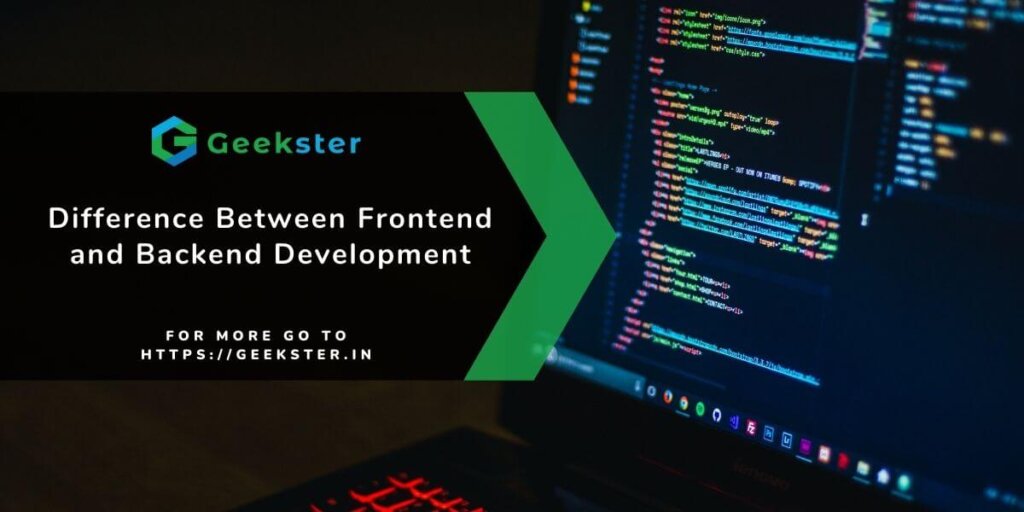“Programmers are constantly in maintenance mode.”- Andrew Hunt
What is Backend Web Development?
Web Development is classified into two components: Frontend Development and Backend Development. Backend web development is activities that take place at the backend of the programs. It comprises server-side web application logic and integration and pursuits, like creating libraries, writing APIs, and working with system components vis-à-vis frontend development, which aims at customer-facing programs and services. Backend developers build codes using various Backend programming languages that allow databases and applications to communicate with each other. Backend developers look after and maintain the backend of a website, including servers, applications, and databases.
What Does a Backend Developer Do?
A backend developer must work closely with the frontend developer to ensure that functionality is aligned with the user experience. Functionality is a vital characteristic of any web application and it is up to the developer to make certain its good performance and speed. Further, it is essential to constantly make updates while also monitoring and organizing the database information in a correct and secure way. A crucial decision that a backend developer makes, in the beginning, is selecting the appropriate Backend development languages for them because it has the potential to affect the entire future of the application.

Following is the list of backend languages for web development that every backend developer must look out for.
1. JavaScript

- JavaScript is a popular and widely known programming language. It can be used for both frontend and backend development.
- Historical patterns and Statistics show that the acceptance of Node.Js has boosted the use of JavaScript as a backend development language.
- JavaScript provides several noteworthy features for backend development, including dynamic typing, lightweight scripting, object-oriented programming support, client-side validation, and an enormous community.
- NodeJS, Express, and MeteorJS are some commonly used backend frameworks of JavaScript.
2. Python

- Modern programming tactics can be feasibly understood and worked upon with Python.
- Python contains several sophisticated libraries that comprise a massive quantity of pre-written codes. Consequently, it makes the backend developer’s life a little easy since they do not have to write codes from scratch, which in turn reduces development time.
- Organizations and businesses use Python for Backend web development because of its usage of object-oriented programming, ease of understanding the code, vast range of frameworks, versatility, and small learning curve. For backend programming languages, Python frameworks also include Django and Flask.
- Python’s use in web development, data processing, scripting, and desktop app development makes it an extremely versatile language.
3. Java

- This object-oriented backend development language is widely used in the building and upgrading of enterprise-scale online applications, desktop apps, android apps, scientific apps, and many others.
- Java offers two or more threads to run simultaneously, called multithreading, to maximize CPU utilization.
- Some other advantages of using Java as a backend programming language best for web developers include the following OOPs concepts, extensive open-source libraries, automatic memory allocation, garbage collection, and portability.
- Popular Java frameworks include grails, spring, and struts.
4. Ruby

- Another known backend programming language used is Ruby. It is the basis for frameworks like Ruby on Rails. It has an easy-to-understand and expressive syntax. The ruby programming language has its own defined set of keywords, contains more than 60,000 libraries, and is a dynamically typed language.
- The Stack Overflow Developer survey suggests that Ruby is the 14th most popular programming language in the world, with 7.1% of respondents being Ruby on Rails engineers.
- Rails were created to make backend programming language convenient and assist in creating websites of any complexity. Ruby’s purpose is to simplify the construction of new high-performance web projects.
5. PHP

- PHP stands for Hypertext Preprocessor. It is an open-source server-side scripting language mainly designed for backend web development.
- PHP includes features such as cross-platform compatibility, OOPs, support for different databases like SQLite, MySQL, and others, as well as a large community of users. PHP does not require a compiler.
- The built-in database connection modules of PHP help in connecting databases feasibly, reducing the trouble and time for the development of web applications and content-based sites.
- Top PHP frameworks include Codelgniter, Laravel, and a lot more.
6. C#

- C-sharp is one of the most utilized backend programming languages for developing system backend, which is attributed to its incredible features such as Windows server automation. C-sharp comes in extremely beneficial to creating CLI applications and games. To top it all off, the code in C-sharp runs in less time.
- Cross-platform compatibility, values collection, garbage data, and object-oriented programming are very highly rated on the list of its key features.
- Some majorly used C# Frameworks for backend web development are ASP.NET Core and .NET MVC.
Conclusion
Even though backend web developers work ‘behind the scenes, their contribution to any web application completion and success is immense. In order to provide a logical and functional social network, app, website, or marketplace, the developer is required to build decent communication with all the members of their web development team, from the UX/UI designers to the frontend developers. Moreover, being in sync with the clients’ and stakeholders’ needs and wants can help create a victorious system architecture and provide valuable solutions to their problems.
A backend developer has a lot on their plate and their responsibilities can vary a lot. In addition to organizing and analyzing databases (using tools such as PostgreSQL, MongoDB, and Oracle), their duties include working on the server-side, and ensuring the database information is communicated through coding to the browser. And this is where backend programming languages like Python, Ruby, and PHP come into the picture.
Working in backend web development can be a demanding but also exciting job. Web developers are often considered the brain of a web application. One can become an exceptional professional by being ambitious and humble to learn from every project and challenge that one may encounter.
Read Some related articles
- Full Stack Developer Salary In India – For Freshers and Experienced
- What Is Full Stack Development – Geekster’s Guide To Beginning A Career
- What Are The Best Companies And Jobs For Full Stack Developers?
- How to Become a Software Engineer?
- Frontend vs Backend -The Complete Guide






